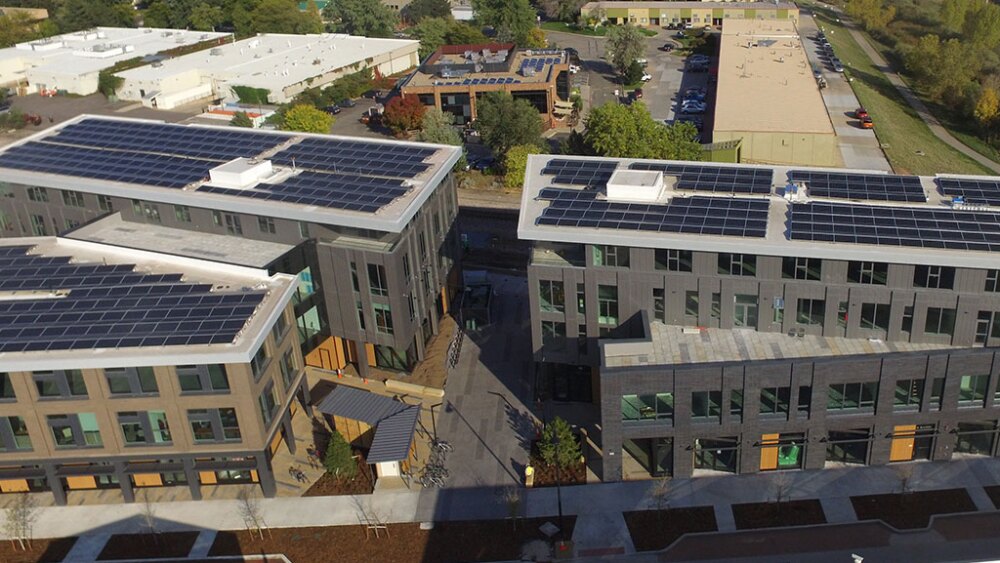This year’s Net Zero Buildings Week is Sept. 16-20. The virtual event series supports partnerships and collaboration across the built environment industry to collectively advance net zero buildings.
Below, ULI’s sustainability team experts Marta Schantz and Kara Kokernak offer their insights and perspectives on the economic benefits of net zero buildings, and the essential role of real estate in mitigating the impact of climate change.
What kind of responsibility does the real estate sector have in addressing climate challenges and achieving net zero?
Marta Schantz: Buildings account for 39 percent of global carbon emissions and nearly 70 percent of emissions in urban cities. Real estate has a responsibility and an opportunity to address that. We know that reducing carbon increases asset value and reduces climate risk for a portfolio.
How do you see net zero buildings influencing the future of architectural design and urban planning?
Kara Kokernak: Achieving net zero starts with pre-design and planning, focusing on passive design and energy efficiency as cost-effective carbon reduction strategies. The process then emphasizes on-site renewables, green power, and building electrification. Remaining emissions can be offset with off-site renewables, RECs [renewable energy credits], and carbon offsets. Additional steps include engaging tenants and reducing embodied carbon in materials. Involving diverse stakeholders early with an integrated design process ensures a shared vision of sustainability and net zero carbon goals.
What are the economic benefits of investing in net zero buildings for both developers and occupants?
Schantz: We are at a point in the industry now where green funds outperform conventional funds. Period. Why is that? Investing in net zero buildings brings significant economic benefits: lower operating costs through energy efficiency, leading to reduced expenses and higher returns. With tenant demand for sustainable spaces driving up rents and lease renewals, these buildings offer greater profitability. They also attract a larger pool of investors and ensure compliance with evolving regulations, helping to avoid fines and penalties. Overall, net zero buildings are both financially and environmentally advantageous.
Can you describe the HopeWorks Station project near Seattle and explain why it is a good example of net zero?
Kokernak: HopeWorks Station North is a net zero-ready development that combines affordable housing, workforce development, and sustainability to improve residents’ lives and benefit the planet. Energy savings from the net zero design are reinvested into community programs, offering housing, social, and job reentry services for low-income, unhoused, and veteran populations.
How can industry leaders and organizations effectively inspire more widespread adoption of net zero building standards?
Schantz: Walk the talk! Industry leaders need to lead by example. By actively pursuing and showcasing their own net zero projects—like Kilroy Realty achieving carbon neutrality or BXP retrofitting a building to meet tenant demand—leaders demonstrate the feasibility and value of these standards. When organizations like Morgan Creek Ventures and SHARP Development make strides in net zero developments, they set a powerful example, encouraging others to follow suit and accelerate market adoption.
Learn more about ULI’s mission priority work on net zero at ULI.org/NetZero.







